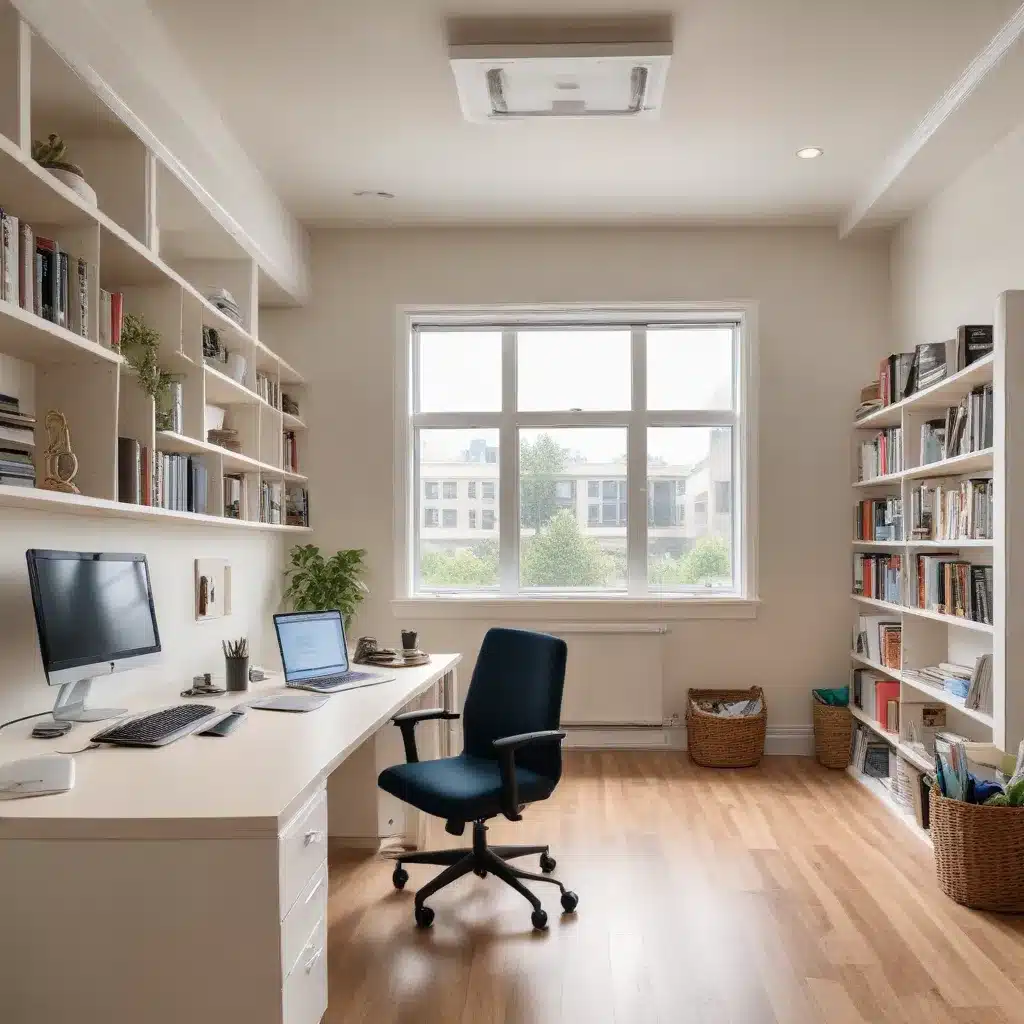The pandemic has dramatically transformed how we live, work, and learn. As schools shift to remote instruction, families are adapting their homes to cultivate productive study environments. As an experienced home improvement consultant for Reluctant Renovator, I’m here to share practical strategies for creating dedicated spaces that foster focus, comfort, and inspiration.
Defining Productive Study Spaces
Establishing an efficient study area is essential for remote learning success. The right space planning, ergonomic furniture, and functional design elements can make all the difference.
Space Planning Considerations
When carving out a study zone, consider factors like noise levels, traffic patterns, and available square footage. Identify a quiet, low-traffic area with minimal distractions. Separate dedicated learning spaces for each student if possible, or use creative partitions to create individual workstations. Ensure the study area has adequate natural lighting and ventilation to prevent fatigue.
Ergonomic Furniture Choices
Comfort is key for long periods of studying and virtual classes. Invest in an adjustable desk and ergonomic chair to support proper posture and minimize strain. For younger students, choose desks and seating scaled to their size. Incorporate task lighting, a wireless mouse, and noise-cancelling headphones to optimize the workspace.
Functional Design Elements
Incorporate thoughtful storage solutions like shelving, cabinets, and organizers to keep learning materials within reach. Whiteboard surfaces or cork boards enable students to jot down notes, pin up schedules, and display inspirational content. Strategically placed electrical outlets and cable management systems ensure a clutter-free, distraction-free environment.
Home Office Setup for Remote Learning
As parents or guardians may also be working from home, creating a dedicated workspace layout that minimizes noise and enhances focus is crucial.
Dedicated Workspace Layout
Designate a distinct area for the home office, away from the main study zones. Soundproof the space with acoustic panels or strategically placed furniture to contain noise. Ensure the office has ample lighting and ventilation to boost productivity.
Noise-Cancelling Solutions
Use white noise machines, sound-absorbing curtains, or area rugs to mitigate disruptive sounds. Encourage family members to observe quiet hours during critical work and study periods.
Lighting and Ventilation Needs
Adequate lighting and air circulation are vital for sustained concentration. Position the workspace near natural light sources and supplement with task lighting as needed. Ensure proper HVAC airflow to prevent fatigue and maintain a comfortable environment.
Decluttering and Organizing the Study Area
Minimizing visual distractions is key to creating a focused learning environment. Employ decluttering strategies, storage solutions, and efficient cable management.
Minimalist Decor Strategies
Opt for a clean, uncluttered aesthetic with neutral color palettes and simple furnishings. Minimize decorative elements and personal items to maintain a sense of order and tranquility.
Storage Solutions for Learning Materials
Utilize built-in cabinetry, floating shelves, or modular storage units to neatly organize textbooks, stationery, and other learning materials. Label bins and compartments for easy access.
Efficient Cable Management
Conceal unsightly cords and cables using cable trays, raceways, or power strips to maintain a visually appealing and safe study space.
Personalized Learning Environment
While functionality is paramount, infusing the study space with inspiring decor, wellness features, and productivity-boosting elements can elevate the learning experience.
Inspiring Decor and Aesthetics
Incorporate the student’s personal interests, hobbies, or favorite colors into the design. Display motivational artwork, educational posters, or personalized mementos to cultivate a sense of ownership and pride.
Incorporating Wellness Features
Include houseplants, natural textures, and soothing color schemes to promote mindfulness and rejuvenation. Consider adding standing desks or exercise balls to encourage movement during study breaks.
Optimizing for Productivity
Strategically place bulletin boards, goal-tracking calendars, and task-organizing tools to help students stay on top of their schedules and deadlines. Incorporate study-specific accessories like desk lamps, fidget toys, and task-lighting.
Adapting to Different Learning Styles
Every student has unique learning preferences. Designing a study space that caters to visual, auditory, and kinesthetic learners can enhance engagement and retention.
Visual Learners’ Preferences
Allocate ample whiteboard space, pinup areas, and digital display surfaces to support note-taking, mind-mapping, and visual brainstorming. Incorporate inspiring imagery, infographics, and color-coded organizational systems.
Auditory Learners’ Requirements
Ensure the study space has minimal background noise and clear acoustics to facilitate focused listening during virtual classes and study sessions. Provide high-quality headphones and microphones for clear communication.
Kinesthetic Learners’ Needs
Create flexible zones within the study area that encourage movement, such as standing desks, exercise balls, or beanbag chairs. Integrate hands-on learning tools, fidget toys, and activity-based organizers to cater to the needs of kinesthetic learners.
Technology Integration for Remote Learning
Seamless connectivity, collaborative tools, and multimedia learning aids are essential for remote learning success.
Reliable Connectivity Setup
Invest in a high-speed internet connection and robust Wi-Fi network to ensure uninterrupted virtual classes and video conferencing. Supplement with ethernet cables or signal boosters as needed.
Collaborative Tool Integration
Leverage cloud-based productivity suites, video conferencing platforms, and shared whiteboards to facilitate group projects, virtual study sessions, and interactive lessons.
Multimedia Learning Aids
Incorporate document cameras, digital tablets, and smart displays to enhance the learning experience. Explore educational apps, interactive simulations, and virtual field trips to supplement traditional textbook-based learning.
Renovating your home to support remote learning doesn’t have to be an overwhelming task. By carefully planning the study space, optimizing for comfort and productivity, and integrating the right technology, you can create a transformative learning environment that empowers your students to thrive. For more inspiration and renovation resources, be sure to visit Reluctant Renovator.




